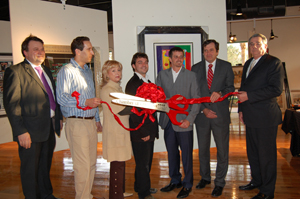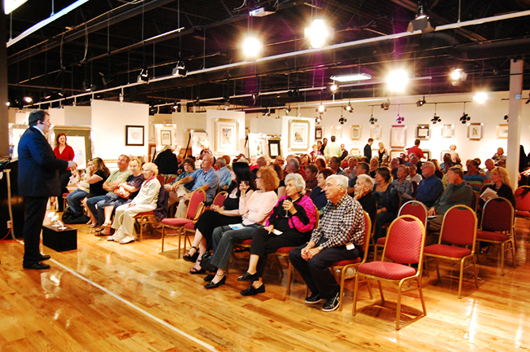EL PASO, Texas (AP) – Jay Leno has two Lars Klingstedt originals hanging in his 17,000-square-foot Big Dog Garage.
Mariah Carey is a Klingstedt fan and plans to work with him to create a Marilyn Monroe portrait for her.
Over the past 20 years, the El Paso designer-artist has always found inspiration for his art from pop culture, nature and classic cars from the ’50s, ’60s and ’70s.
But five and a half years ago, he began to draw that inspiration from his mother – Niecie Klingstedt, a breast cancer survivor.
“I really admire her for her courage and determination,” Klingstedt said in telephone interview from his home in Manhattan, N.Y. “It’s inspiring to know that despite everything she has gone through, she still has the drive and the energy and positive attitude to keep going.”
After Sunday’s Susan G. Komen Race for the Cure in El Paso, Klingstedt will auction some of his paintings as part of the first Art For A Cure, an evening of culture, food and giving. Klingstedt’s sister, Kerstin Klingstedt, is producing the event to honor their mother.
“Both of my children are very compassionate children, and they are constantly doing good for other people,” said Niecie Klingstedt, who is 71, but feels as if she were 60. “I am honored and thrilled, but I don’t think I handled it any differently than any other breast cancer patient. It hit so close to their hearts that they felt more compassionate. It affected them to do something.”
Through the support of family and friends, Niecie Klingstedt has been cancer-free for five years.
“It’s very, very scary, and my heart goes out to anybody who gets the diagnosis of any kind of cancer. It’s almost like a death sentence,” she said. “I met another cancer survivor who told me, ‘Cancer will change your life forever, but it will be for the better.’”
Of course, Niecie Klingstedt thought her friend was a little crazy.
“At the time, in the middle of treatment, I thought, ‘This is better? Better than what? Hell?’” she said. “Now I realize what she meant, and I took those words literally and decided that’s how I wanted to live my life, in a positive manner.”
The charity event will include live and silent auctions, food, door prizes and swag bags.
“Her battle with cancer is probably the most brave and courageous thing that I have ever gotten to be a part of,” said Kerstin Klingstedt. “To watch her do it and be there to support her it has given me tons of inspiration. Just seeing her go through it and the way she handled it was extremely amazing.”
Niecie Klingstedt’s breast cancer was diagnosed almost six years ago, and she was immediately taken to M.D. Anderson Cancer Center in Houston for treatment for three months.
“She is a really strong woman, so she really didn’t let us know how much pain she was in or how hard it is on her,” Kerstin Klingstedt said. “Seeing her brave face and seeing how hard she fought it is a blessing.”
The highlight of the Art For A Cure event will be the auction of 10 original pieces of artwork by Lars Klingstedt.
“I’m excited,” said Lars Klingstedt of his first major showing in El Paso. “I have participated in several charity events all over the country but never in my hometown.”
Available for auction will be selections from his portraits series (Marilyn Monroe, Elizabeth Taylor and Barack Obama) along with selections from his classic cars, nature and travel series.
All proceeds from the event will be donated directly to the El Paso Affiliate of Susan G. Komen for the Cure.
“We have received more than $6,000 in merchant donations that will be auctioned off,” Kerstin Klingstedt said. “I thought it was going to be a small, intimate art show of maybe 100 people and my goal was to raise $2,000, but we are going to blow that out of the water.”
Copyright 2010 Associated Press. All rights reserved. This material may not be published, broadcast, rewritten or redistributed.
AP-WS-02-24-10 1100EST









